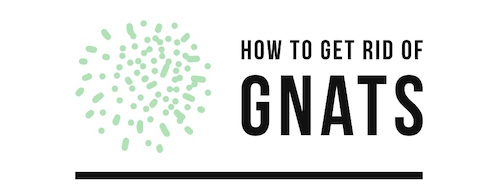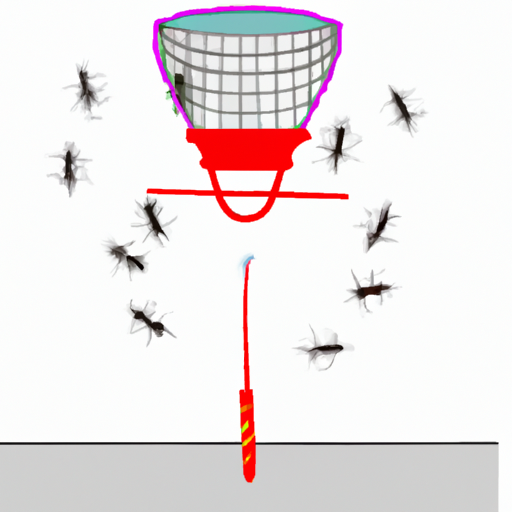How to Use Natural Repellents to Catch Gnats
Gnats are small, pesky insects that can be difficult to get rid of. Fortunately, there are natural repellents that can help you catch and eliminate them. Here’s how to use natural repellents to catch gnats:
1. Use a vinegar trap. Fill a shallow bowl with equal parts apple cider vinegar and water, then add a few drops of dish soap. The gnats will be attracted to the smell of the vinegar and will fly into the bowl where they will become trapped in the soapy water mixture. Empty out the bowl every day or two and replace it with fresh solution until all of the gnats have been eliminated from your home or garden area.
2. Hang yellow sticky traps around your home or garden area where you’ve noticed an infestation of gnats. These traps contain an adhesive material that attracts and captures flying insects like gnats when they come into contact with it. Replace these traps regularly as needed until all of the gnats have been eliminated from your space.
3. Plant certain herbs in your garden or near windowsills where you’ve noticed an infestation of gnats as these herbs act as natural repellents for them such as basil, lavender, mint, rosemary, sage, thyme and catnip among others . These plants emit strong scents which repel most types of flying insects including gnats away from your home or garden area naturally without any need for chemical pesticides or insecticides which could be harmful to other beneficial insects like bees in your environment .
4 . Make a homemade spray using essential oils such as peppermint oil , eucalyptus oil , citronella oil , tea tree oil , lemongrass oil etc., mixed with water in a spray bottle . Spray this mixture around windowsills , doorways , cracks & crevices etc., where you’ve noticed an infestation of gnat activity . This should help keep them away naturally without any need for chemical pesticides or insecticides which could be harmful to other beneficial insects like bees in your environment .
By following these steps on how to use natural repellents to catch Gnat’s effectively you should soon see results!
What Attracts Gnats and How to Use That Knowledge to Catch Them
Gnats are small, flying insects that can be a nuisance in homes and gardens. They are attracted to certain smells, such as rotting food, garbage, and sweet-smelling fruits and vegetables. They also like damp areas with standing water or moist soil. Knowing what attracts gnats can help you catch them more effectively.
One of the most effective ways to catch gnats is by using traps. Traps come in many forms, including sticky traps that use a sweet-smelling bait to attract the gnats; light traps that use ultraviolet light to draw them in; and water traps that contain a mixture of soap and water which drowns the insects when they land on it. You can also make your own homemade trap using items such as apple cider vinegar or red wine mixed with sugar or honey placed in an open container near where you have seen the gnats congregating.
Another way to get rid of gnats is by using insecticides specifically designed for this purpose. These products usually contain pyrethrin or permethrin which will kill adult gnats on contact but may not be effective against larvae or eggs so it’s important to read the label carefully before applying any product indoors or outdoors.
Finally, if you want to prevent future infestations of gnats from occurring then it’s important to keep your home clean and free from sources of food for them such as rotting fruit or vegetables left out on countertops; garbage cans should be emptied regularly; pet food should be stored away from areas where they could attract pests; windowsills should be kept dry; standing water should be eliminated around your home (such as birdbaths); and screens should be installed over windows and doors if possible so that flying insects cannot enter your home easily.
By understanding what attracts these pesky little bugs you can take steps towards preventing future infestations while also catching existing ones more effectively with traps or insecticides specifically designed for this purpose
The Best Traps for Catching Gnats in Your Home or Garden
Gnats can be a nuisance in your home or garden, but there are several traps you can use to catch them. Here are some of the best traps for catching gnats:
1. Sticky Traps: These traps are simple and effective. They consist of a sticky surface that attracts and captures gnats when they land on it. You can buy pre-made sticky traps or make your own using double-sided tape and yellow paper (gnats are attracted to yellow). Place the trap near windows, doors, or other areas where gnats congregate.
2. Vinegar Traps: Gnats love the smell of vinegar, so you can use this to your advantage by making a vinegar trap. Fill a jar with apple cider vinegar and add a few drops of dish soap (this helps break down the surface tension so that the gnats will sink). Place the jar near windows or other areas where you’ve seen gnat activity and wait for them to be attracted to it and drown in it.
3. Light Traps: Gnats are also attracted to light, so you can set up light traps around your home or garden using an LED light bulb as bait (make sure it’s not too bright). The bugs will fly towards the light source and get trapped in an enclosed container placed nearby (such as a mason jar with holes punched into its lid).
4. Insecticides: If all else fails, insecticides may be necessary for getting rid of large numbers of gnats quickly. However, these should only be used as a last resort since they may have adverse effects on other beneficial insects in your garden such as bees and butterflies.
By following these tips, you should be able to effectively trap any pesky gnat infestations in your home or garden!
How To Make a DIY Trap for Catching Gnats
Gnats can be a nuisance in the home, but they can be easily trapped with a few simple materials. Here is how to make a DIY trap for catching gnats:
Materials:
• A shallow bowl or container
• Apple cider vinegar
• Dish soap
• Plastic wrap
Instructions:
1. Fill the bowl or container with apple cider vinegar, about halfway full. Add several drops of dish soap and stir gently to combine. The dish soap will help break the surface tension of the liquid so that gnats will sink when they land on it.
2. Cover the top of the bowl or container with plastic wrap and secure it tightly around the edges with tape or rubber bands. Make sure there are no gaps between the plastic wrap and sides of your container, as this could allow gnats to escape from your trap!
3. Poke several small holes in the plastic wrap using a toothpick or other sharp object – these holes should be large enough for gnats to enter but too small for them to escape from once inside!
4. Place your trap near areas where you have seen gnat activity – such as near windowsills, plants, garbage cans, etc – and leave it overnight (or longer). The gnats will be attracted by the smell of apple cider vinegar and get stuck in your trap when they try to enter through one of its tiny holes!
Once you’ve caught all of your pesky little pests, simply discard them outside away from any living areas in your home! With this easy DIY method you can quickly rid yourself of those pesky little bugs without having to use any harsh chemicals or expensive store-bought traps!
Tips on Identifying and Eliminating the Sources of Gnat Infestations
Gnat infestations can be a nuisance and difficult to get rid of. Identifying and eliminating the sources of gnat infestations is key to controlling them. Here are some tips on how to do this:
1. Inspect your home for potential breeding grounds. Gnats breed in moist, dark areas, so look for any standing water or damp soil around your home, such as in potted plants or near leaking pipes or faucets. Also check for any decaying organic matter that may be providing food sources for the gnats, such as rotting fruit or vegetables in kitchen bins or compost piles outside.
2. Eliminate standing water and damp soil by fixing any leaks and draining away excess moisture from around your home with a dehumidifier if necessary.
3. Remove any decaying organic matter from inside and outside your home that could be providing food sources for the gnats, such as rotting fruit or vegetables in kitchen bins or compost piles outside.
4. Use insecticides specifically designed to target gnats if necessary; these can be found at most hardware stores and garden centers but should only be used after all other methods have been exhausted first due to their potential toxicity levels when used indoors (especially around children).
5. Keep windows closed during peak times when gnat activity is highest (usually early morning hours) to prevent them from entering your home through open windows/doors; also make sure screens are properly fitted over all windows/doors so they cannot enter through small gaps/holes in the screens themselves!

